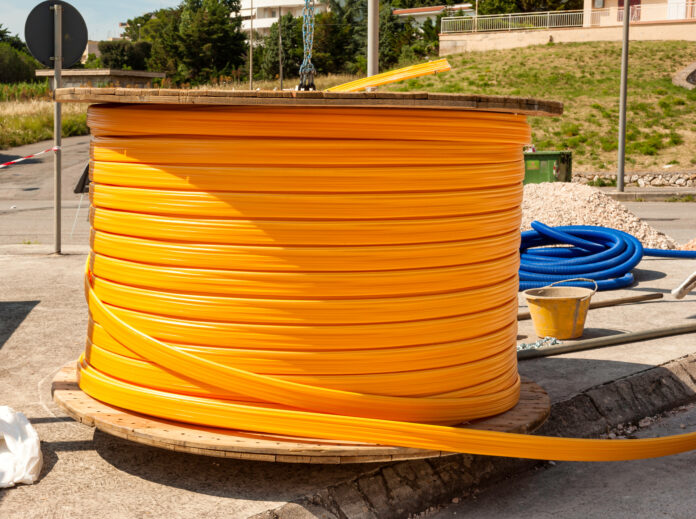The French regulator said the overall rate of FTTH deployment decreased by more than 25% between 2022 and 2023
At the end of last December, of the 44.1 million premises in metropolitan France reached by operators, 38 million were passed for fibre to the home (FTTH), but more than six million still needed to be covered. Optical fibre coverage increased by two points during the quarter, to 86%. French regulator Arcep revealed the numbers in its latest fixed broadband and superfast broadband market scorecard.
Over the course of Q4 2023, one million additional premises were passed for FTTH – or 25% fewer than in Q4 2022. Overall, the pace of FTTH rollouts also decreased by 25% between 2022 and 2023. Throughout 2023, 3.5 million additional premises were passed for FTTH.
The regulator said 2.4 million premises in lower density, public-initiative areas were rendered eligible for fibre access, which marked a 20% decrease YoY. The decreased pace of deployment in lower density, public-initiative areas observed in 2022 continued through 2023, with only 600,000 additional premises passed for FTTH – marking a close to 40% drop YoY.
Close to 400,000 additional premises were passed in those areas covered by calls for expressions of local interest (called “zones AMEL” in French), a rate comparable to 2022. Lastly, the rate of deployment in very high-density areas continued to slow over the course of the year, with fewer than 200,000 additional premises passed, or 40% fewer than in 2022.
As of 31 December 2023, 39.8 million premises were covered by fixed superfast broadband services, which translates into a 90% rate of coverage.
Monitoring operators’ compliance
Arcep also reported on the operators’ legally binding FTTH rollout commitments. At the end of 2023, in parts of the country where the government has issued a call for investment letters of intent (“zones AMII”), around 90% of the premises Orange made a commitment for had been made eligible for fibre access, while around 96% of those in municipalities where SFR has made a commitment had been made eligible for fibre access.
Superfast, saturated nation
The regulator reported that the total number of superfast broadband subscriptions stood at 24.2 million as of 31 December 2023, or 75% of all broadband and superfast broadband subscriptions in metropolitan France (up 8% YoY). The quarterly growth for superfast subscriptions (up 645,000 in Q4 2023) was below the 835,000 increase of the previous year, which the regulator attributed to slower growth for fibre plan subscriptions.
The pace of new subscriptions to FTTH plans slowed but remained steady – up 835,000 in Q4 2023 compared to 965,000 in Q4 2022. The number of FTTH subscriptions stood at 21.4 million at the end of 2023, representing more than 66% of all broadband and superfast broadband internet subscriptions.
The steady decrease in the number of “classic” or DSL broadband subscriptions continued through the fourth quarter of 2023 (down 565,000 in Q4 2023 versus 770,000 in Q4 2022). Their numbers dropped to 8.1 million as of 31 December 2023. The total number of broadband and superfast broadband subscriptions stood at 32.3 million at the end of 2023. The pace of growth for these subscriptions increased slightly – 80,000 subscriptions in Q4 2023 compared to 65,000 in Q4 2022. The year-on-year growth stood at up 1% compared up 1.4% in 2022.


